Travel: Sunderbans, the Land of Sundari!
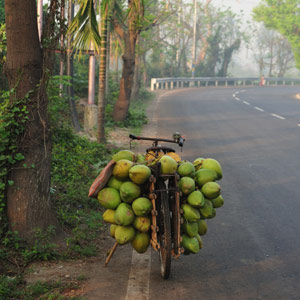
The sprawling, fragile mangrove forests of eastern India and Bangladesh are magical, holding many treasures for the offbeat traveler.
In the easternmost boundaries separating two densely populated countries—India and Bangladesh—is one of the earth’s most magical landscapes. Remote, largely inaccessible, but inhabited by man and man-eating tigers! Sunderbans (literally, ‘beautiful forest’) is a network of tidal waterways, mudflats, and small islands of salt-tolerant mangrove forests; one-third lies in India and two-thirds in Bangladesh. This cluster of 54 tiny islands, the setting of The Hungry Tide, a celebrated novel by Amitav Ghosh, is also a UNESCO World Heritage National Park. Its dominant mangrove species, Heritiera fomes, is locally known as Sundari from whence is derived the name of the region, Sunderbans.
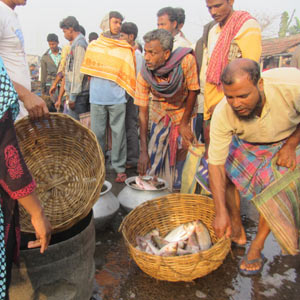
Mythological stories, an alluring landscape, and the rich yet almost invisible wildlife have intrigued me for long years. The charismatic Royal Bengal tiger has lived in this land for a long time, though in recent times its numbers have diminished due to conflicts with the surrounding village communities. Like every other national reserve in the world, Sunderbans is not isolated from the impact of climate change. It is a region where fishing folk from the border villages easily traverse the porous boundaries between the two nations, crossing as the wind and the tides take them. In a land regularly eliminated, at least in part, by the flood tide or by the huge tidal waves rummaged up by cyclones, there are limited options for sustainability and life. One has to depend on the forest resources. Villagers collect honey and wood from the forest, fishermen cultivate prawns near the coasts and inland pools.
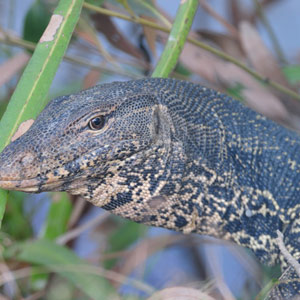
The National Park is home to one of the richest biodiverse regions on earth. If you are happy to switch off, relax, and simply drift through the labyrinth of water channels, immersing yourself in the magical sounds and serenity, then you will find one of nature’s most pristine and fascinating environments in the Sunderbans. Science and census predict the existence of over 100 tigers, a healthy number in the park. Yet it is extremely hard to see one of these shy big cats. If you see one, consider it a blessing or good luck. There are protected walkways and watchtowers to improve chances of sighting any and all wildlife—ungulates such as the wild pig and spotted deer, birds, crocodiles, and small predators. From the interior of a boat, it’s difficult to spot any animal life inside the dense jungle on either side, but this only whets one’s curiosity. There’s compensation, though, in the flocks of birds, river dolphins, even crocodiles.
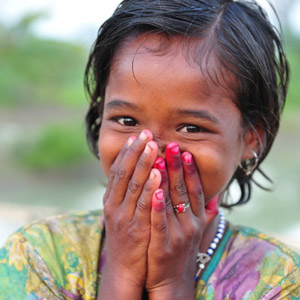
In the adjoining islands, the villages offer wonderful opportunities for an early evening walk. These are some of the most authentic and picturesque villages I have seen in India, and a stroll through them offers unforgettable insights into their vulnerable lives and culture. There is no single religion that dominates the tide country. All the natives of Sunderbans believe in a single deity, Maa Bonbibi, the all-powerful, presiding goddess of the mangroves. There are no customs or rituals associated with the deity. This unique tradition ensures communal and conservational harmony. The villagers’ belief is deeply embedded in the social and cultural mores of the land and passed down from generation to generation.
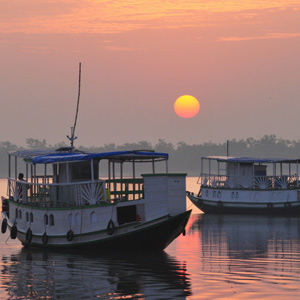
If you go…
• On the Indian side, all travel within the
Sundarbans is by boat, and there are very
few places where it is feasible—or permitted—to set foot.
• My road trip from Kolkata stretched to nearly 9 hours––pit-stops at roadside fish markets and diversions to check out community rituals
engaged me all through the 110 km journey. Arriving at the Gadkhali jetty, the first whiff of the ocean and the vision of vast, open skies was mesmerizing. I was filled with child-like excitement.
• The cooler winter months (October to February) are the most comfortable for exploring the Sundarbans. Expect very little rain and temperatures between 15 and 25 degrees Celsius. The summer rains (June to August) transform it into a green landscape, but flooding can disrupt possible travel.
• The Tora Eco Resort in the island of Bali, where I stayed, is a community-based tourism project. The rustic resort offers accommodation in ethnic cottages built with locally available
material. Situated on the banks of Gumdi River and surrounded by paddy fields and a fishing pond, it is partially powered by solar energy.
Bhaskar Krishnamurthy is an award-winning, widely published photojournalist.
Enjoyed reading Khabar magazine? Subscribe to Khabar and get a full digital copy of this Indian-American community magazine.
blog comments powered by Disqus










